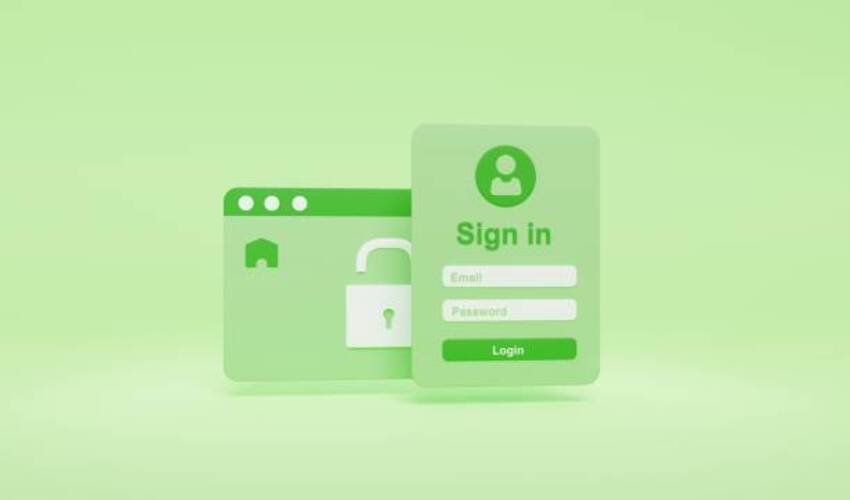Onboarding remote employees is no longer just an HR task—it’s a strategic imperative in today’s evolving work landscape. With more companies adopting fully remote or hybrid models, the traditional in-person onboarding methods fall short in creating meaningful connections and equipping new hires for success. A well-designed remote onboarding process ensures employees feel welcomed, understand their roles clearly, and integrate smoothly into company culture—even from miles away.
In 2025, the best way to onboard new employees remotely combines thoughtful human interaction with cutting-edge technology. Tools like AI customer support enable real-time assistance and personalized guidance, making virtual onboarding best practices more accessible and effective. By embracing these strategies, organizations can not only reduce the friction of remote onboarding but also boost employee engagement, retention, and long-term productivity.
Why Onboarding Remote Employees Fails More Often Than You Think
Onboarding remote employees comes with unique challenges that often lead to disconnected hires, low engagement, and early turnover. Without face-to-face interaction, new employees can feel isolated, unsure of their role, or out of sync with the company culture. These issues frequently stem from common mistakes in the remote onboarding process, such as inadequate communication, lack of structured support, and unclear expectations. Failing to address these areas can cause new hires to disengage quickly, increasing the risk of early churn and impacting overall team productivity. Understanding these pitfalls is the first step toward improving remote employee onboarding and fostering lasting connections.
How to Onboard Remote Employees in the First 72 Hours
Successfully onboarding remote employees within the first 72 hours is critical for setting a positive tone and ensuring new hires feel connected and productive from day one. Here’s how to approach it step-by-step, incorporating key aspects of the remote employee onboarding checklist:
1. Send Equipment and Logins Before Day 1
One of the most common issues with remote onboarding is technical delays. To prevent this, ship all necessary equipment—such as laptops, headsets, and other hardware—well ahead of the employee’s start date. Alongside this, provide login credentials for email, communication tools, and internal platforms before Day 1. This preparation empowers the new hire to set up their workspace and systems at their own pace, eliminating frustrating first-day hurdles and signaling organizational efficiency.
2. Host a Video Call, Not Just a Slide Deck
Instead of bombarding new hires with impersonal slide presentations, arrange a live video call on their first day. Ideally, this call is led by their manager or team leader and includes introductions to key team members. This interactive session should cover role expectations, initial projects, and company culture. Personalized video interactions help bridge the social gap caused by remote work and establish an early sense of team belonging, which is crucial for engagement and motivation.
3. Assign a Real Person, Not Just HR Automation
Remote onboarding can easily feel isolating if it relies solely on automated HR tools or digital forms. To counter this, assign a dedicated “buddy” or mentor to each new employee. This person serves as the go-to contact for any questions, whether about workflows, culture, or social connections. Having a real human support system accelerates learning, offers emotional reassurance, and facilitates integration into the company community, greatly improving retention.
This approach to how to onboard remote employees combines logistical readiness with human-centered interaction. By focusing on timely equipment delivery, meaningful real-time communication, and personal support, organizations can ensure a smoother remote onboarding process that sets employees up for success from the very start.
Remote Onboarding Best Practices That Build Connection
Building genuine connections during remote onboarding can be challenging but is essential for employee engagement and long-term retention. Implementing the following remote onboarding best practices ensures new hires feel welcomed, supported, and integrated from day one:
- Culture-First Communication
Prioritize sharing your company’s mission, values, and culture early and often. Use storytelling and real-life examples during onboarding sessions to bring culture to life. This helps new employees understand not just what they do, but why it matters, fostering a deeper emotional connection.
- Show, Don’t Just Tell: Screen Recordings and Async Videos
Instead of relying solely on dense manuals or text-heavy documents, leverage screen recordings and asynchronous video walkthroughs. These formats allow employees to learn at their own pace while visually understanding software, processes, and workflows. This method caters to diverse learning styles and reduces the overwhelm often associated with remote onboarding.
- Keep Your Camera On (and Smile)
Encourage managers and teammates to keep cameras on during video calls. Visual cues like smiles, nods, and attentive eye contact improve social presence, making interactions feel more personal and authentic. It also helps new hires read non-verbal signals, which are often missing in remote communication.
- Create Virtual Watercooler Moments
Set up casual, informal chat channels or virtual coffee breaks where new employees can socialize without agendas. These “watercooler” moments build camaraderie and replicate the spontaneous office interactions that help people bond naturally.
- Personalize the Onboarding Experience
Tailor onboarding content and check-ins based on the employee’s role, background, and interests. Personalized touchpoints show that the company values the individual, not just their output, which enhances engagement and loyalty.
- Regular Check-ins Beyond HR
Schedule frequent one-on-one meetings between the new hire and their direct manager, mentor, or buddy during the first few weeks. These conversations provide space for feedback, questions, and emotional support, helping new employees feel seen and heard.
- Leverage Collaborative Tools
Introduce collaboration platforms (Slack, Microsoft Teams, etc.) early and encourage active participation. Using shared project boards, chat rooms, and file repositories facilitates teamwork and keeps new hires connected to ongoing projects and conversations.
- Set Clear Expectations and Milestones
Provide a roadmap outlining key milestones, goals, and learning objectives for the first 30, 60, and 90 days. Clear expectations reduce uncertainty and give new employees tangible checkpoints to celebrate progress.
- Celebrate Early Wins
Recognize and celebrate small achievements during onboarding, whether it’s completing training modules or successfully contributing to a team meeting. Positive reinforcement boosts confidence and motivation.
These remote onboarding best practices combine practical tools with intentional human connection, creating a supportive environment where remote employees can thrive. By fostering culture, encouraging authentic communication, and personalizing the experience, organizations bridge the physical distance and build a unified team.
Virtual Onboarding Best Practices to Avoid Isolation
Preventing isolation is a key challenge in onboarding remote employees. Virtual onboarding best practices should focus on creating authentic connections and fostering a sense of belonging from the start.
- Schedule Informal Calls: Coffee Chats and Meet-the-Team Tours
Organize casual virtual meetups that are not work-focused, such as coffee chats or “meet-the-team” tours. These relaxed settings encourage new hires to connect with colleagues personally, helping to break the ice and build trust.
- Use Buddy Systems and Chat Integrations Like Donut
Pair new employees with experienced team members through a buddy system. Tools like Donut automate random coffee meetings or informal chats within communication platforms like Slack, ensuring ongoing social interaction and support beyond formal meetings.
- Provide Access to Organizational Charts and Real Team Stories
Give new hires easy access to up-to-date org charts so they can understand team structures and key contacts. Supplement this with authentic team stories or testimonials that highlight team culture and individual experiences, making the company feel more transparent and human.
By embedding these virtual onboarding best practices, companies can combat feelings of isolation, enhance engagement, and help remote employees feel truly part of the team from day one.
Wrapping Up: Mastering Onboarding Remote Employees for Success
Remote onboarding is a critical step in ensuring new hires feel welcomed, connected, and productive—no matter where they are. By adopting proven remote onboarding best practices and focusing on meaningful communication, companies can overcome the challenges of distance and create engaged teams ready to thrive.
FAQ Section
What is remote onboarding?
Remote onboarding is the process of integrating new employees into a company when they work outside of a traditional office setting, using digital tools and virtual communication.
How long should remote employee onboarding take?
While initial onboarding activities often happen within the first 72 hours, a full remote onboarding process typically spans 3 to 6 months to ensure skill development and cultural integration.
Is remote onboarding as effective as in-person?
When executed with intentional strategies—such as virtual onboarding best practices and personalized support—remote onboarding can be just as effective as in-person onboarding.
Can onboarding remote employees be fully automated?
Automation can streamline administrative tasks in remote employee onboarding, but human interaction remains essential to build relationships and address individual needs.
Read Dive is a leading technology blog focusing on different domains like Blockchain, AI, Chatbot, Fintech, Health Tech, Software Development and Testing. For guest blogging, please feel free to contact at readdive@gmail.com.





